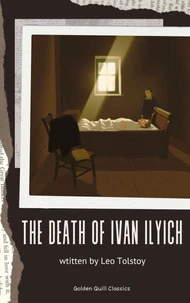Please note: This audiobook has been created using AI voice.
What Is Art? is an 1897 philosophical treatise by Leo Tolstoy that lays out his philosophy of aesthetics. Rejecting notions of aesthetics that center around beauty, Tolstoy instead posits that art is defined by its role in transmitting feelings between human beings. Furthermore, he argues that the quality of art is not assessed by the pleasure it gives, but whether the feelings the art evokes align with the meaning of life revealed by a given society's religious perception.
In line with his spiritual views set out in The Kingdom of God Is Within You, Tolstoy argues that the proper purpose of art is to transmit feelings of human unity and "to set up, in place of the existing reign of force, that kingdom of God, i.e. of love, which we all recognize to be the highest aim of human life."
Tolstoy makes a number of unconventional aesthetic judgments in the course of the book, dismissing such works as Wagner's operas, Romeo and Juliet, and his own past works like War and Peace and Anna Karenina as "bad art." In turn, he praises such works as Dickens' A Christmas Carol and Hugo's Les Misérables as "examples of the highest art, flowing from the love of God and the love of man."
Please note: This audiobook has been created using AI voice.
What Is Art? is an 1897 philosophical treatise by Leo Tolstoy that lays out his philosophy of aesthetics. Rejecting notions of aesthetics that center around beauty, Tolstoy instead posits that art is defined by its role in transmitting feelings between human beings. Furthermore, he argues that the quality of art is not assessed by the pleasure it gives, but whether the feelings the art evokes align with the meaning of life revealed by a given society's religious perception.
In line with his spiritual views set out in The Kingdom of God Is Within You, Tolstoy argues that the proper purpose of art is to transmit feelings of human unity and "to set up, in place of the existing reign of force, that kingdom of God, i.e. of love, which we all recognize to be the highest aim of human life."
Tolstoy makes a number of unconventional aesthetic judgments in the course of the book, dismissing such works as Wagner's operas, Romeo and Juliet, and his own past works like War and Peace and Anna Karenina as "bad art." In turn, he praises such works as Dickens' A Christmas Carol and Hugo's Les Misérables as "examples of the highest art, flowing from the love of God and the love of man."

 , qui est-ce ?
, qui est-ce ?